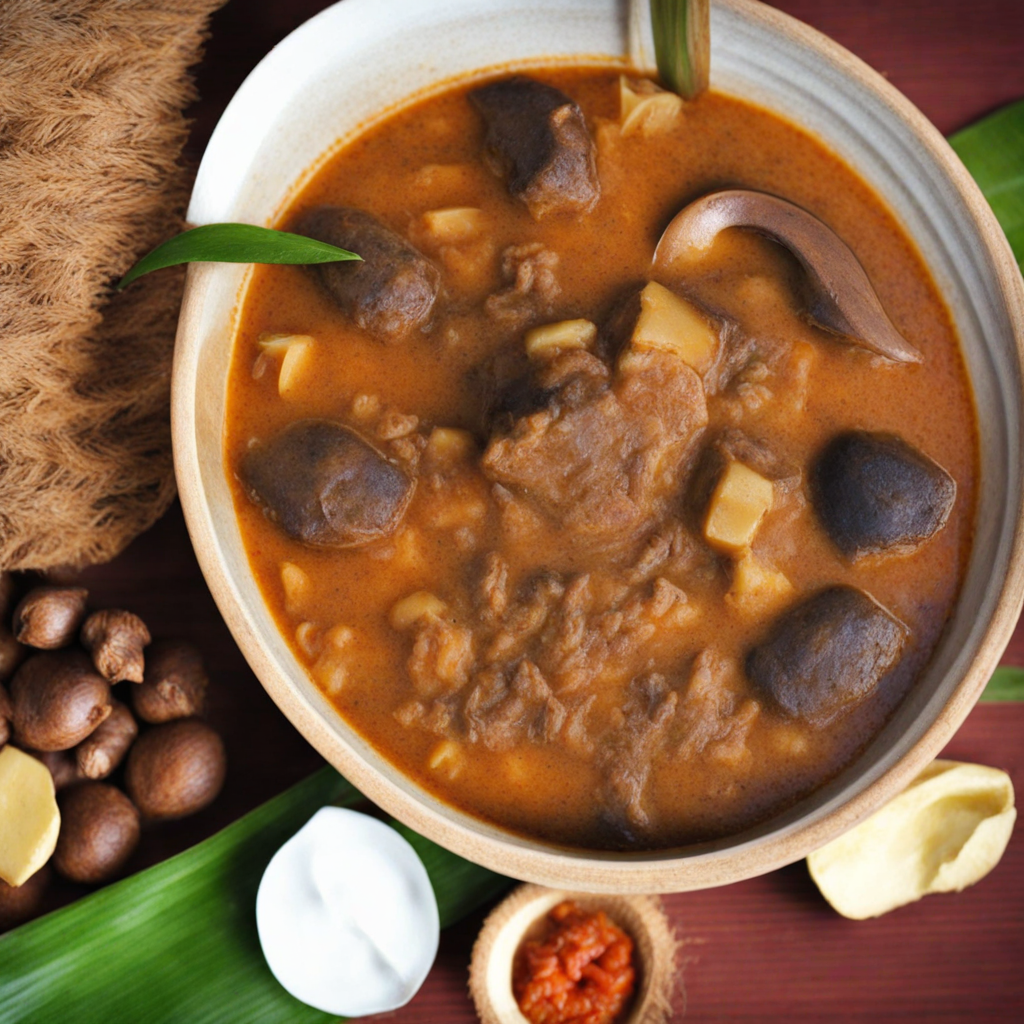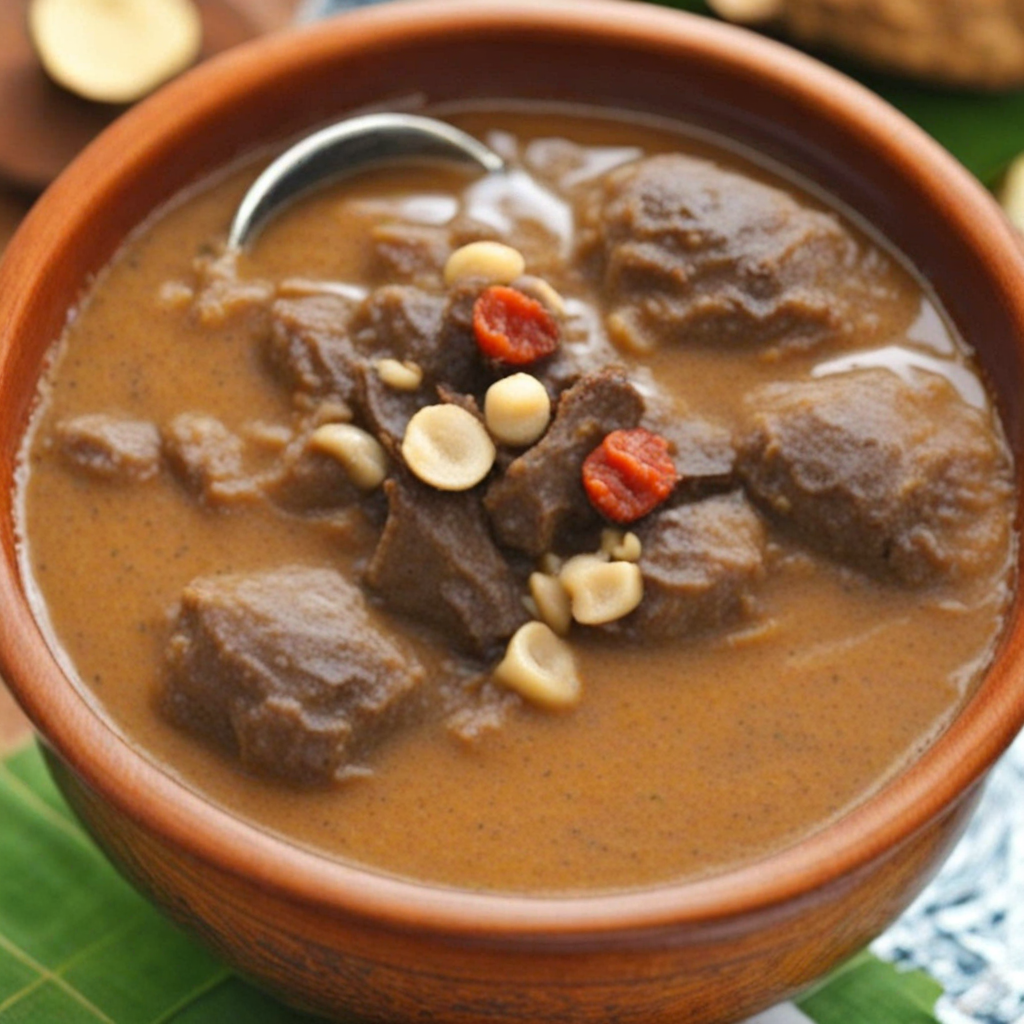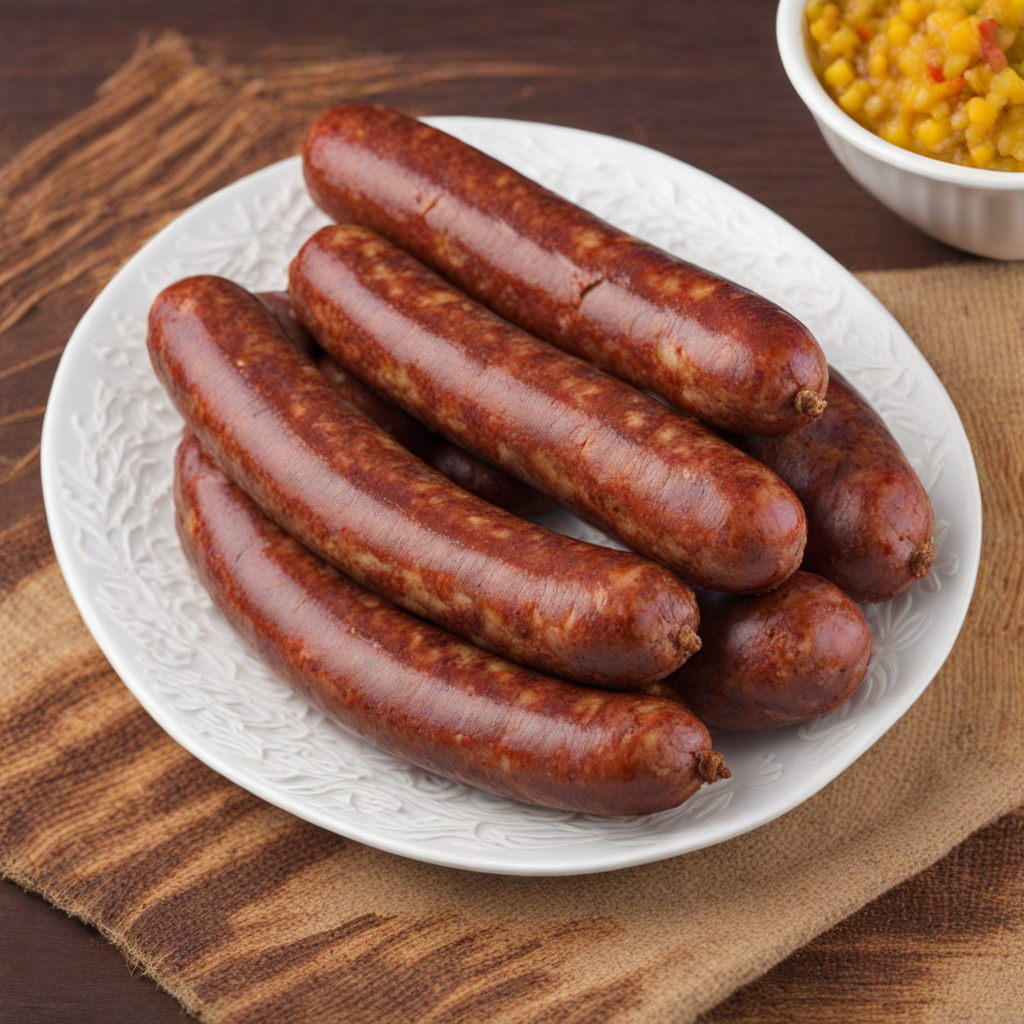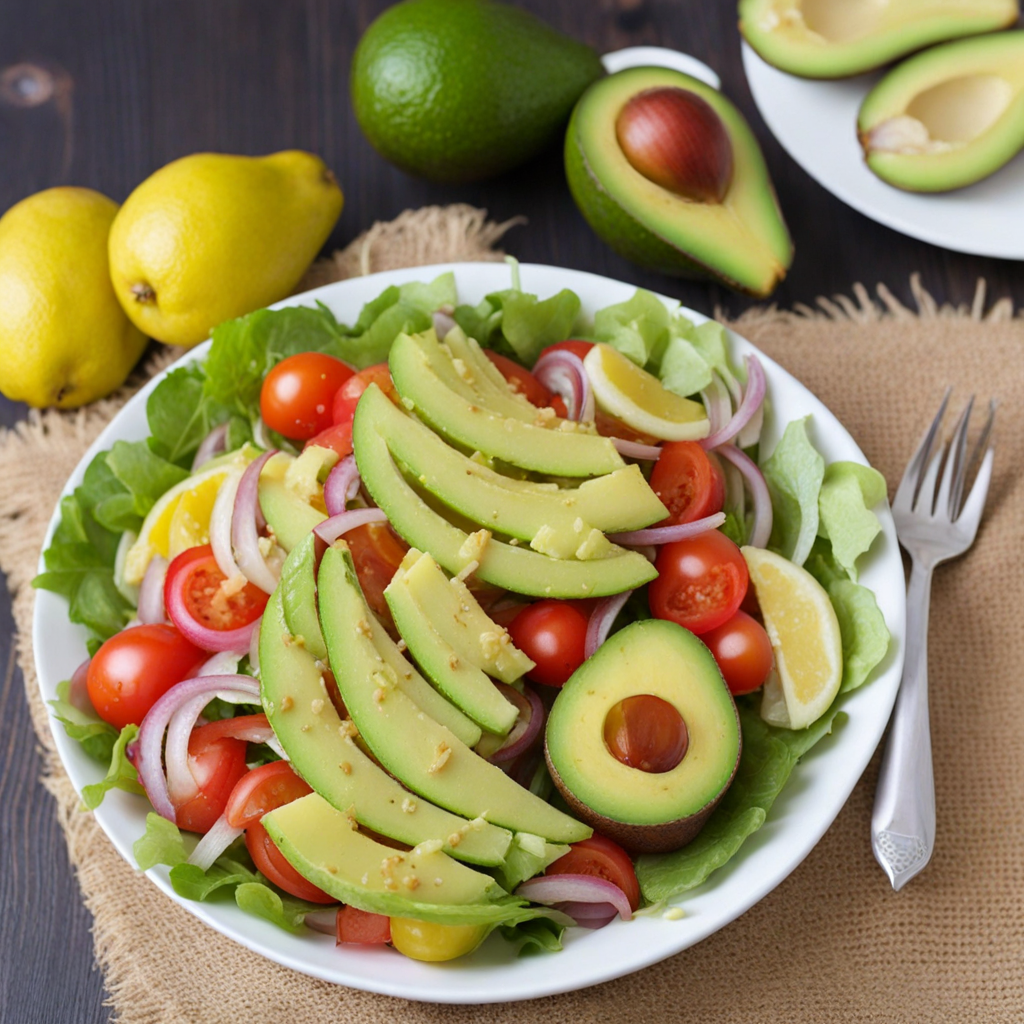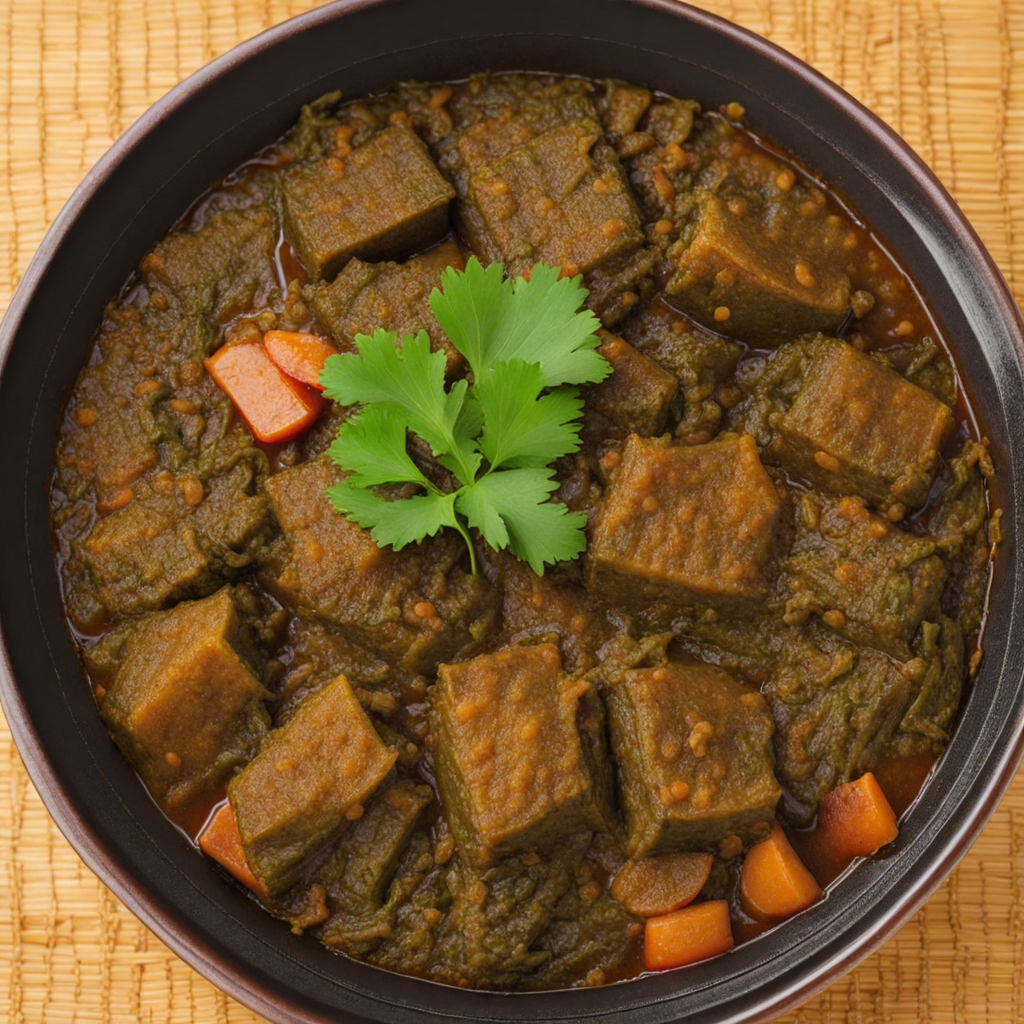Palm Nut Soup
Palm Nut Soup, also known as "Abenkwan," is a traditional Ghanaian dish that offers a rich and hearty experience for those adventurous enough to explore its flavors. The base of this soup is derived from the pulp of palm nuts, which are boiled and then pounded to extract a silky, vibrant red-orange liquid. This unique ingredient sets the stage for a deeply flavorful broth that is both aromatic and comforting. The soup is often seasoned with a variety of spices, including ginger, garlic, and pepper, which enhance its complex taste and provide a tantalizing warmth with every spoonful. What makes Palm Nut Soup particularly delightful is its versatility. It can be prepared with a variety of proteins, such as chicken, goat, or fish, which not only adds depth to the dish but also allows for customization based on personal preferences. The proteins simmer in the soup, absorbing the rich flavors of the palm nut base, resulting in tender, succulent pieces that are infused with the essence of the broth. Vegetables like onions and tomatoes are also commonly added, contributing to the dish's heartiness and providing a fresh contrast to the rich palm nut flavor. Served typically with a side of fufu, rice, or banku, Palm Nut Soup becomes a communal dish that invites sharing and enjoyment among family and friends. The pairing of the thick, luscious soup with a starchy side creates a satisfying balance, making each meal a fulfilling experience. Whether you are new to Ghanaian cuisine or a food enthusiast seeking to expand your palate, Palm Nut Soup is a delightful journey into the heart of West African flavors that promises to leave a lasting impression.
How It Became This Dish
Nkatenkwan: A Culinary Journey Through Ghanaian History #### Origin and Ingredients Nkatenkwan, a traditional Ghanaian peanut soup, has its roots deeply embedded in the diverse culinary tapestry of the country. The dish is primarily made from groundnuts (peanuts), which were introduced to West Africa in the 16th century through the transatlantic slave trade and the Columbian Exchange. Groundnuts quickly became a staple, thriving in the region's climate and soil, which allowed them to flourish as a vital source of protein and nutrition. The soup itself is typically prepared using a combination of groundnut paste, tomatoes, onions, and various spices, resulting in a rich and creamy consistency. Some recipes include meats such as chicken or beef, while vegetarian variants can be made by omitting meat and focusing on the peanut flavor. The use of palm oil, a common fat in West African cooking, adds depth and richness to the dish, enhancing its flavor profile. #### Cultural Significance Nkatenkwan is more than just a dish; it is a symbol of community, heritage, and identity among the Akan people, one of the largest ethnic groups in Ghana. The soup is often served during significant family gatherings, celebrations, and traditional ceremonies, such as weddings, funerals, and festivals, signifying unity and shared joy. It is common for families to gather around a large pot of Nkatenkwan, allowing everyone to partake in the meal and partake in the communal spirit of sharing. In Ghana, food is woven into the fabric of social interactions and cultural expressions. Nkatenkwan serves as a vehicle for storytelling and memory, often passed down through generations. Elders share tales of their youth, while children learn the traditional methods of preparation, ensuring that the culinary heritage remains alive. The dish's ability to bring people together resonates profoundly, as it nurtures relationships and fosters a sense of belonging. #### Development Over Time The evolution of Nkatenkwan can be traced through various historical contexts and culinary trends. In pre-colonial times, the Akan people cultivated their ingredients and relied on local resources. The soup's basic form was likely a simple blend of groundnuts and water, seasoned minimally, yet it was nutritionally complete. With the arrival of European traders and colonial influence in the 19th century, new ingredients and cooking techniques began to permeate Ghanaian cuisine. The introduction of tomatoes, for example, transformed Nkatenkwan, adding a layer of acidity and sweetness that balanced the richness of the peanuts. This adaptation reflected a broader trend in West African cooking, where local dishes began incorporating foreign elements while still maintaining their traditional essence. The post-colonial period also saw changes in dietary habits and food production. Urbanization and the rise of fast food culture introduced new culinary influences, leading to a mix of traditional and modern cooking styles. Despite these changes, Nkatenkwan has remained a beloved staple, often celebrated in local restaurants and homes alike. Its adaptability has allowed it to thrive, with chefs and home cooks alike experimenting with variations that cater to modern palates while respecting the traditional base. #### Nkatenkwan in Contemporary Ghana In contemporary Ghana, Nkatenkwan continues to be a beloved dish that transcends socio-economic classes. It is commonly found at street food stalls, local eateries, and upscale restaurants, each offering their unique twist on the classic recipe. The dish's versatility allows for experimentation; for instance, some chefs have introduced fusion elements, combining Nkatenkwan with other global cuisines to create innovative dishes that appeal to a broader audience. Moreover, Nkatenkwan plays a crucial role in promoting local agriculture and supporting farmers. The growing interest in organic and locally sourced ingredients has led to a resurgence in peanut farming, as Ghanaians seek to preserve their culinary heritage while contributing to sustainable agricultural practices. This movement aligns with a global trend towards farm-to-table dining, where the emphasis is placed on fresh, locally-sourced ingredients. #### The Future of Nkatenkwan As Ghanaians become increasingly aware of the importance of their culinary heritage, Nkatenkwan is poised to remain a staple in Ghanaian cuisine. The dish serves as a bridge between the past and the present, reflecting the rich history and traditions of the Akan people while adapting to modern tastes and lifestyles. Culinary schools and cooking workshops are beginning to incorporate traditional dishes like Nkatenkwan into their curricula, ensuring that the younger generation learns the art of preparing this iconic soup. Social media platforms have also played a role in popularizing Nkatenkwan, with food bloggers and influencers showcasing their versions of the dish, thereby reaching a global audience eager to experience authentic Ghanaian cuisine. In addition, Nkatenkwan's nutritional value positions it well within the growing trend toward healthy eating. The protein-rich peanuts, combined with fresh vegetables and spices, make it a wholesome meal option that appeals to health-conscious consumers. #### Conclusion Nkatenkwan is not just a soup; it is a reflection of Ghana's rich cultural heritage, a testament to the resilience and adaptability of its people. As it continues to evolve, Nkatenkwan embodies the spirit of community and the importance of food in shaping identity and tradition. Whether enjoyed at a family gathering, a festive celebration, or a simple meal at home, Nkatenkwan remains a cherished dish that tells the story of Ghanaian history, culture, and the enduring power of food to connect and nourish.
You may like
Discover local flavors from Ghana


